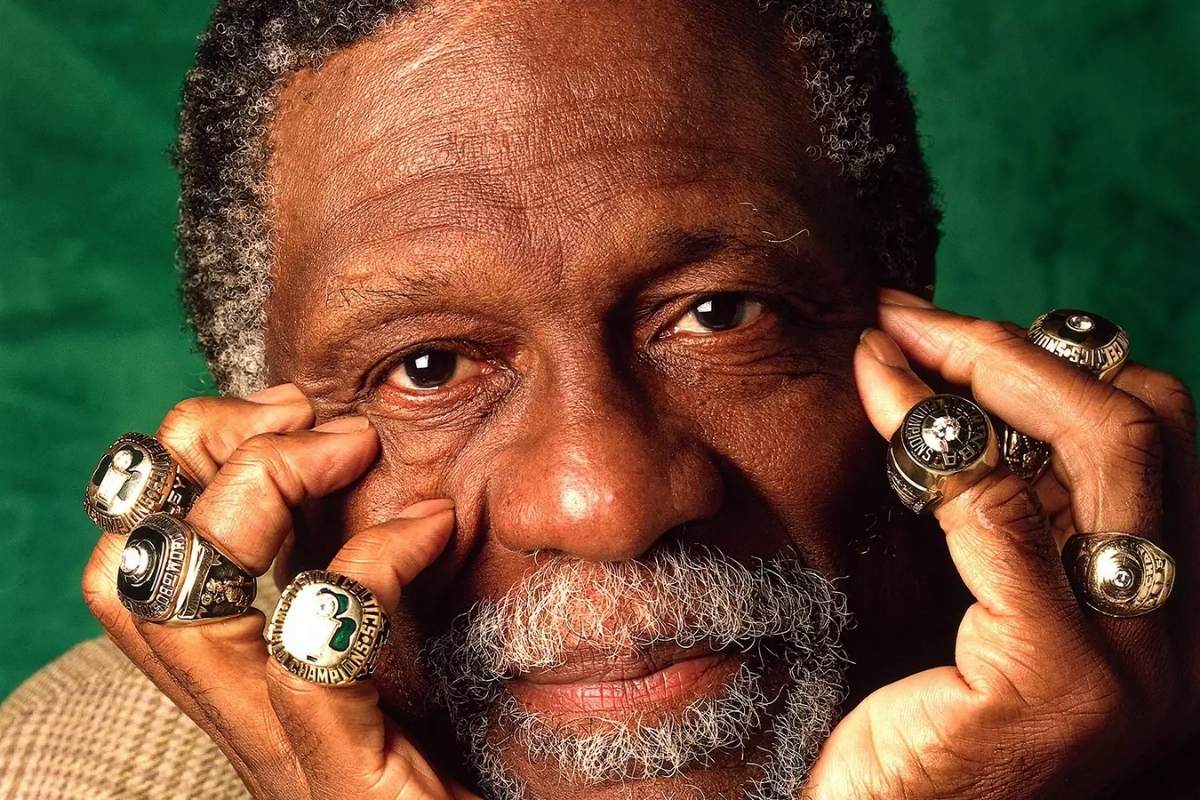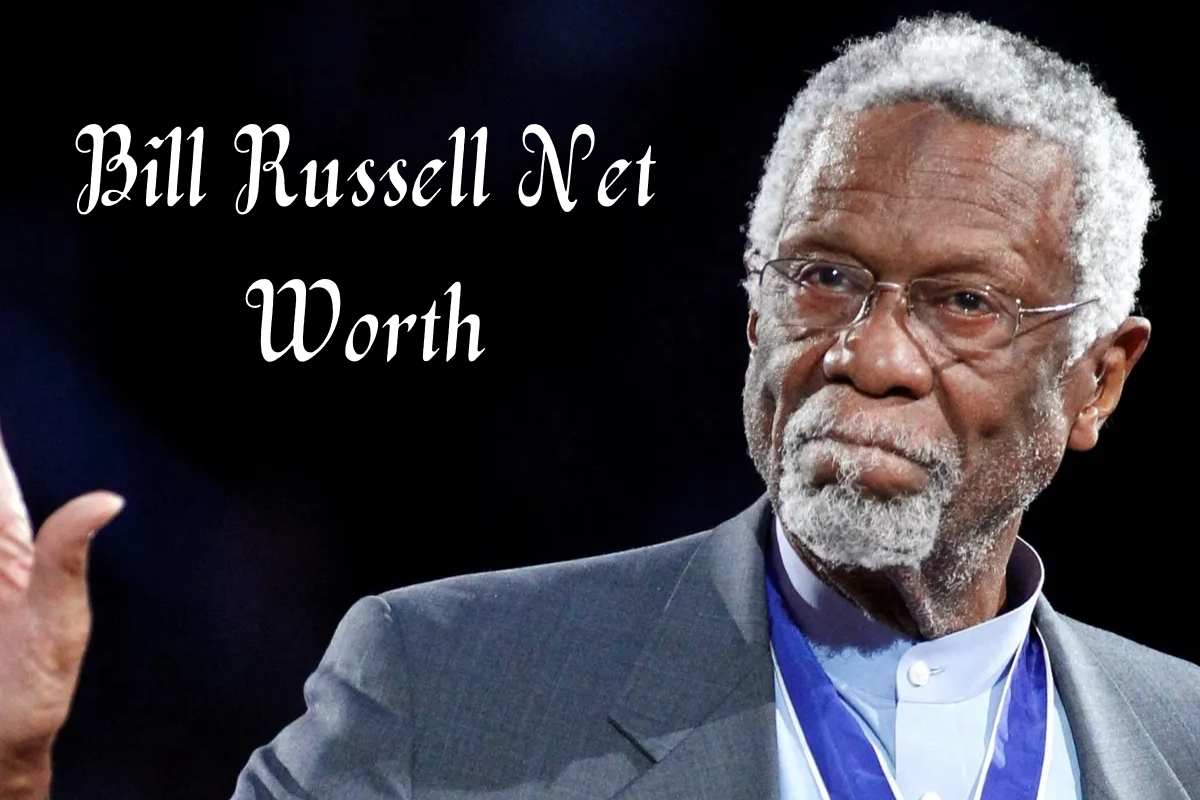He played center for the Boston Celtics of the National Basketball Association (NBA) from 1956 to 1969 as William Felton Russell (February 12, 1934 – July 31, 2022). It is safe to say that he was the heart and soul of the Boston Celtics dynasty that won 11 NBA titles over the course of his 13-year career, winning five MVP awards along the way. Athletes in North American sports leagues like the National Hockey League’s Henri Richard and Russell are tied for the most titles won by a single individual. Russell is regarded as one of the finest players in the history of the sport.
In 1955 and 1956, he led the San Francisco Dons to back-to-back NCAA titles, and in 1956, he captained the United States Olympic basketball team to gold. Despite his limitations on offense, as Russell never averaged more than 19.0 points per game in any season, some respect him as one of the greatest basketball players of all time for his totally dominant defensive effort. Shot blocking and man-to-man defense were two of his many contributions to the Celtics’ career during his time in Boston, where he stood at 6’10” (2.08 m) and had a 7’4″ (2.24 m) arm span.
Read More:
- Manu Bennett Net Worth: Early Life, Personal Life, And More
- Mark Gastineau Net Worth: Why Did He Retire?
Bill Russell’s Early Life
Katie and Charles Russell welcomed their first child, Bill Russell, into the world in 1934. A series of public housing buildings housed Russell’s family when he was eight years old. His mother passed away not long after. As a teen, Russell attended McClymonds High School, where he won back-to-back state championships as a basketball player during his junior and senior years. Russell was largely overlooked by college recruiters, but he did receive one offer: a full scholarship to the University of San Francisco.
At USF, he became the centerpiece of a squad that developed into a significant power in collegiate basketball, winning the NCAA championships in both 1955 and 1956. Russell represented the University of South Florida in track and field in addition to basketball. The high jump was his strongest event, and he was regarded as the world’s seventh-best high jumper in 1956.
Bill Russell’s Personal Life

Rose Swisher, a girl he met in college, became the love of his life when Russell married her in 1956. Together, they have three children: Karen, William Jr., and Jacob. In 1973, the couple separated amicably. In 1977 Bill Russell married former Miss USA Dorothy Anstett. They got divorced in 1980. In 1996, Russell wed Marilyn Nault, whom he was with until her death in 2009.
Bill Russell’s Net Worth
Bill Russell was a great American basketball player who had a net worth of $10 million at the time of his death. Bill Russell died on July 31, 2022, at the age of 88. Bill Russell is considered one of the best professional basketball players and overall athletes of all time. Among professional athletes, he was the first of color to achieve superstardom. Bill Russell played in the NBA with the Boston Celtics from 1956 through 1969, collecting 11 NBA titles in the process.
He was the first black NBA superstar after becoming the league’s five-time MVP and a 12-time All-Star. Additionally, Russell captained the gold medal-winning US basketball team at the 1956 Summer Olympics. Despite his triumphs, Russell constantly battled racism. Russell was inducted into the Naismith Memorial Basketball Hall of Fame and the National Collegiate Hall of Fame for his tremendous accomplishments in the NBA.
Bill Russell’s Career
Russell was passed over by college recruiters and had received no scholarship offers until USF recruiter Hal DeJulio saw him play in a high school game and took notice. Russell’s “atrocious basics” and “meager scoring” did not impress DeJulio, but he could tell that the young Russell had a special feel for the game, especially when the stakes were high. When DeJulio offered Russell a scholarship, he immediately accepted. Sports journalist John Taylor saw it as a watershed event in Russell’s life because he recognized that basketball was his chance to transcend poverty and racism, and he swore to make the best of it.
At USF, Russell became the new starting center for coach Phil Woolpert of the San Francisco Dons. Ruger’s defensive prowess was enhanced by Woolpert’s emphasis on defensive strategy and cautious half-court play. Woolpert’s choice of how to deploy his players was unaffected by their skin tone. In 1954, he became the first coach of a major college basketball squad to start three African-Americans players: K. C. Jones, Hal Perry, and Russell.
For most of Russell’s college career, he took advantage of his lack of size to develop a unique defensive approach that saw him play help defense against opposing forwards and aggressively contest their attempts. Combining the physique and shot-blocking skills of a big with the foot speed of a guard, Russell became the nucleus of a USF squad that rapidly became a powerhouse in collegiate basketball. After USF kept Holy Cross Crusaders star Tom Heinsohn scoreless in a full half, Sports Illustrated wrote: “If ever learns to hit the basket, they’re going to have to change the rules.”
The NCAA rewrote rules in reaction to Russell’s outstanding play; the lane was expanded for his junior year. A second new regulation was enacted by the NCAA rules committee after Russell graduated, prohibiting basket interference. Russell was one of several powerful persons who pushed for changes to NCAA rules. George Mikan (1945) led to a ban on goaltending, and Lew Alcindor (1967) led to a ban on the dunk shot, both of which were eventually lifted by the NCAA. Russell and his black teammates faced racist taunts throughout many of the team’s games, especially when playing away from home.
In one example, hotels in Oklahoma City refused to allow Russell and his black teammates while they were in town for the 1954 All-College Tournament. In protest, the complete crew decided to camp out in a closed college dorm, which was later termed a significant bonding experience for the group. Decades later, Russell claimed that his experiences hardened him against abuse of all kinds, saying: “I never permitted myself to be a victim.”
Russell’s lifetime worldview as a team player was formed by his experiences growing up in a racist environment “The idea of a black player being the best wasn’t considered acceptable at the time. Nothing of the sort occurred. I experienced one of the most memorable college seasons of my life during my junior year of college. We won 28 out of 29 games. We won the National Championship. At the Final Four, I was named the game’s most valuable player. I earned first-team All-American.
I averaged over 20 points and over 20 rebounds, and I was the only person in college blocking shots. So once the season was done, they hosted a Northern California dinner, and they picked another center as Player of the Year in Northern California. If I accepted these judges as the final arbiters of my career, I’d be a bitter old man by the time I died.” He is claimed to have made a conscious decision to put the team first and foremost, and not care about individual achievements.
Russell had a much better time on the hardwood. During his time at USF, he led them to two NCAA championships, one in 1955 and the other in 1956, he racked up an undeclared double-triple-double of 26 points, 27 rebounds, 20 blocks, three steals, and an assist. He became noted for his excellent defense and shot-blocking ability, once denying 13 shots in a game. UCLA Bruins coach John Wooden called Russell “the greatest defensive guy I’ve ever seen”. He and Jones invented a play known as the alley-oop while at USF. During his college career, Russell earned the NCAA Tournament Most Outstanding Player in 1955, averaging 20.7 points per game and 20.3 rebounds per game.
How Many MVPs Did Bill Russell Win?
Five MVP awards: During his 13 seasons with the Celtics, Russell was awarded the NBA’s MVP on five separate occasions (1958, 1961–1963, 1965). (1958, 1961–1963, 1965). Only Kareem Abdul-Jabbar (six times) has more NBA MVPs to his name. Russell and Michael Jordan are the only other players to win the MVP award five times, both with five MVPs to their name. Wilt Chamberlin and LeBron James both won the award four times.
12 All-Star selections: Russell was chosen as an All-Star in 12 of his 13 seasons with the Celtics. The lone season that he didn’t make the list was his freshman year. After that, he was picked to play in the team’s traditional midseason exhibition every year. He started in seven of the 12 games and amassed a total of 120 points, 139 boards, and 39 assists during those appearances. He was awarded MVP of the All-Star Game in 1963 after tallying 19 points, 24 rebounds, and five assists.
Over the course of his career, Russell racked up an impressive 21,620 rebounds, demonstrating his dominance in this area. That’s the second-most rebounds ever accumulated by a player in NBA history. Only Wilt Chamberlain (23,924) grabbed more during his playing days. In addition to his total rebounds, Russell (22.5 rebounds per game) is also #2 behind Chamberlain (22.9) for the most career rebounds per game average.
Four rebounding titles: Given how good Russell was at rebounding, it’s no wonder that he led the league in the statistic four times. He’s one of three players, along with Kevin Garnett and Andre Drummond, who has led the NBA in rebounding four times. The only players to lead the league in rebounding on more occasions are Chamberlain (11), Dennis Rodman (seven), Moses Malone (six), and Dwight Howard (five) (five).
For more information like this do visit lakecountyfloridanews.com



